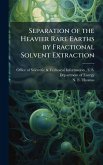The Analysis of Turpentine by Fractional Distillation With Steam, Volume 152, by William Chauncey Geer, presents a detailed exploration of methods for analyzing turpentine. This technical work focuses on the fractional distillation process using steam, providing valuable insights for chemists and engineers working with turpentine and related industrial chemicals. The text offers a rigorous examination of the techniques and principles involved in accurately determining the composition of turpentine samples. Originally published in 1908, this volume remains a significant resource for understanding historical methods in chemical analysis and industrial processes. It details the equipment, procedures, and analytical considerations necessary for effective fractional distillation, making it an essential reference for those interested in the history of chemistry and the development of analytical techniques in the early 20th century. This work has been selected by scholars as being culturally important, and is part of the knowledge base of civilization as we know it. This work was reproduced from the original artifact, and remains as true to the original work as possible. Therefore, you will see the original copyright references, library stamps (as most of these works have been housed in our most important libraries around the world), and other notations in the work. This work is in the public domain in the United States of America, and possibly other nations. Within the United States, you may freely copy and distribute this work, as no entity (individual or corporate) has a copyright on the body of the work. As a reproduction of a historical artifact, this work may contain missing or blurred pages, poor pictures, errant marks, etc. Scholars believe, and we concur, that this work is important enough to be preserved, reproduced, and made generally available to the public. We appreciate your support of the preservation process, and thank you for being an important part of keeping this knowledge alive and relevant.
Bitte wählen Sie Ihr Anliegen aus.
Rechnungen
Retourenschein anfordern
Bestellstatus
Storno








